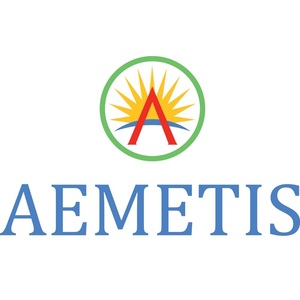Aemetis Biogas: Additional RNG infrastructure now in service

January 31, 2023
BY Aemetis Inc.
Aemetis Inc., a renewable natural gas and renewable fuels company focused on negative carbon intensity products, announced today that after completing construction, testing, and commissioning, the company has accepted into service 36 miles of additional biogas pipeline; two biogas digesters, the Biogas-to-Renewable Natural Gas upgrading facility, and the utility gas pipeline interconnection unit. Two additional dairy digesters will be commissioned and operating in February, with another dairy digester fully operational in March.
Four dairy digesters, approximately 40 miles of biogas pipeline, the central biogas-to-RNG facility and the utility pipeline injection unit are now completed and fully operational, with three more dairy digesters beginning production in February and March. Aemetis RNG is being sold into the PG&E utility gas pipeline and will be stored underground until Aemetis Biogas receives approval from the California Air Resources Board (CARB) for the issuance of credits under the Low Carbon Fuel Standard (LCFS).
The RNG production data collection required for CARB’s Pathway approval process has been completed, and applications will be submitted in February for CARB review and approval.
“Over the last several years, Aemetis has announced milestones for the significant growth of our Carbon-Negative Renewable Natural Gas operations. These milestones have included the phased construction of pipelines, biogas digesters at dairy farms and the upgrade unit that transforms the dairy biogas into RNG. Today, these central systems are now operational and in-service, transporting and converting the biogas from four operating dairy digesters with three more dairy digesters coming online soon,” said Andy Foster, president of Aemetis Biogas, Inc.
Advertisement
Advertisement
“California, and especially Merced and Stanislaus Counties, recognize that the adoption of dairy biogas as a negative carbon intensity fuel to replace diesel in heavy trucks and buses is essential. Aemetis is taking action to reduce carbon pollution and improve local air quality in the most impacted Central Valley communities while creating jobs in an expanding green economy for future generations. Aemetis continues to rapidly deploy the infrastructure necessary to connect our network of dairy digesters and increase the production of carbon negative dairy renewable natural gas,” Foster continued.
The Aemetis pressurized pipeline conveys conditioned, pressurized biogas from dairy digesters to the Company’s centralized gas cleanup facility and the Pacific Gas & Electric (PG&E) interconnection unit to inject RNG into the gas utility pipeline. The RNG is used as a negative carbon intensity transportation fuel primarily to replace diesel in trucks and buses. The initial four-mile Phase 1 pipeline project was completed and commissioned in the third quarter of 2020 in conjunction with the completion of the Company’s first two dairy digesters.
The pipeline project and the $12 million biogas cleanup facility are funded in part by a $4.2 million grant from the California Energy Commission and a $5 million grant from the CPUC RNG Pipeline Interconnection Incentive Program. Aemetis recently announced the closing of $25 million of 20-year financing with Greater Commercial Lending which provides loans to businesses and organizations in under-served and rural communities. This long-term project financing was guaranteed by the USDA through the Rural Energy for America Program (REAP) and carries approximately a 6 percent fixed interest rate for the first five years.
Advertisement
Advertisement
“Government guaranteed loans, such as USDA REAP, can be crucial to encourage development of new and innovative projects such as the Aemetis Biogas dairy digester and pipeline project. With GCL’s support, we continue to expand the number of digesters which capture methane emissions from dairy farms and convert the methane into a negative carbon intensity renewable fuel,” said Eric McAfee, CEO and founder of Aemetis Inc.
About 25 percent of the methane emissions in California are emitted from dairy waste lagoons. When fully built, the Aemetis biogas project plans to connect dairy digesters spanning approximately 60 dairy farms, capturing more than 1.65 MMBtu of dairy methane each year. The project is designed to reduce greenhouse gas emissions equivalent to an estimated 6.8 million metric tons of carbon dioxide over ten years.
Related Stories
The Michigan Advanced Biofuels Coalition and Green Marine are partnering to accelerating adoption of sustainable biofuels to improve air quality and reduce GHG emissions in Michigan and across the Great Lakes and St. Lawrence Seaway.
EIA reduces production forecasts for biobased diesel, increases forecast for other fuels, including SAF
The U.S. Energy Information Administration reduced its 2025 forecasts for renewable diesel and biodiesel in its latest Short-Term Energy Outlook, released April 10. The outlook for “other biofuel” production, which includes SAF, was raised.
FutureFuel Corp. on March 26 announced the restart of its 59 MMgy biodiesel plant in Batesville, Arkansas. The company’s annual report, released April 4, indicates biodiesel production was down 24% last year when compared to 2023.
Neste has started producing SAF at its renewable products refinery in Rotterdam. The refinery has been modified to enable Neste to produce up to 500,000 tons of SAF per year. Neste’s global SAF production capacity is now 1.5 million tons.
Tidewater expects to make final investment decision on proposed SAF project during second half of 2025
Tidewater Renewables Ltd. has reported that its biorefinery in Prince George, British Columbia, operated at 88% capacity last year. A final investment decision on the company’s proposed SAF project is expected by year end.
Upcoming Events










